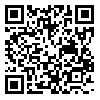Tue, Oct 14, 2025
| فارسی
Volume 7, Issue 3 (Winter 2002)
IJPCP 2002, 7(3): 53-62 |
Back to browse issues page
Download citation:
BibTeX | RIS | EndNote | Medlars | ProCite | Reference Manager | RefWorks
Send citation to:



BibTeX | RIS | EndNote | Medlars | ProCite | Reference Manager | RefWorks
Send citation to:
Izadikhah Z, Ghasemzadeh H, Fada'ie F. Explicite memory bias in Trait anxiety and obsessive compulsive disorder. IJPCP 2002; 7 (3) :53-62
URL: http://ijpcp.iums.ac.ir/article-1-1980-en.html
URL: http://ijpcp.iums.ac.ir/article-1-1980-en.html
1- Neurological and Counseling Center
Abstract: (7927 Views)
Objective: the study was designed to examine explicit memory bias in trait-anxiety and obsessive compulsive disorder. Method: memory bias was examined in three groups of subjects: low-trait anxious (20 subjects), high-trait anxious (20 subjects), and obsessive compulsive patients (20 subjects) in whom danger schema were activated after they were exposed the threat-related material. The trait-anxious subjects were selected from among university students through a Spielberger test. The obsessive-compulsive patients were identified by psychiatrists or clinical psychologists on the basis of DSM-IV criteria. All subjects were tested on explicit memory, and the data was analyzed through analysis of variance. Findings: the high trait anxious group demonstrated explicit memory bias against threatening adjectives, whereas the obsessive-compulsive subjects demonstrated explicit memory bias against obsessive threatening adjectives. Results: the results demonstrated that both the obsessive- compulsive patients and the high trait-anxious subjects are biased against threat-related material
Type of Study: Original Research |
Subject:
Psychiatry and Psychology
Received: 2013/07/16 | Accepted: 2013/07/17 | Published: 2013/07/17
Received: 2013/07/16 | Accepted: 2013/07/17 | Published: 2013/07/17
| Rights and permissions | |
 |
This work is licensed under a Creative Commons Attribution-NonCommercial 4.0 International License. |



